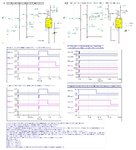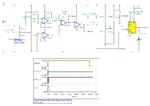Swagger_Dancer
Newbie level 3
I am using proteus isis to build my adjustable delay unit with a 555 timer connected to it. The resisters and capacitors have values when changed will delay the current to make it turn off after so long. No matter how many values I changed it will not turn off and continues to light the LED. I don't know if I have wired it wrong either. It also needs to attach to my audio generator to turn off the alarm, when connected to that the alarm stays sounded





